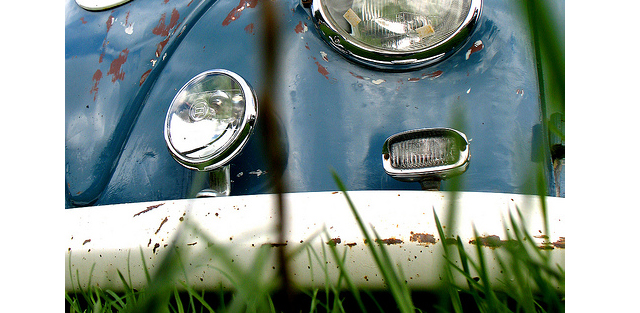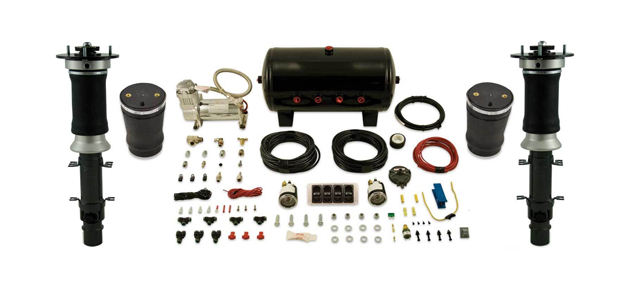- Home/ VW Technical
- VW Air Suspension/
VW Air Suspension

Air Suspension
If you want to eat the weeds, but still use your VW regularly air suspension is the answer.
Air suspension on vehicles is not a new concept and commercial vehicles and buses have used air shocks to accomplish height adjustment and a smooth ride for years. But in recent years it has forged it’s way into the modified car market.
The science behind air suspension is that air is compressible and if it is contained properly can act as a spring. Then by adding or removing air from the system the height of the spring can be adjusting, allowing your Vdub to move up and down.
Here is what you need for your beetle or camper van :
Airbags
Pretty much what it says on the tin, a thick rubber bag that can be filled with air. Different size airbags are available dependent on the weight of the vehicle and should be matched to suit your vehicle. (sorry I don’t have this formula!).
Air will enter the airbag via a port, with single or dual port inlets available. The more inlets the faster you can elevate and drop, so dual port is recommended.
Air Shocks
If you are limited on space, which is the case on the front of a VW Beetle, smaller air shocks are a good alternative. Similar to the regular dampers in appearance but with an air spring and damper incorporated into the one unit. On a Beetle there is no need for the factory torsion bars with air shocks.
Purpose designed air shock systems are available to fit both king and link and ball joint Beetles and most other early, air-cooled VW’s.
Compressor
The compressor or air pump supplies the air to your ‘air ride’ system.
The compressor system is similar to the tyre pumps found on garage forecourts for pumping up your tyres and run from a 12v supply from the vehicles electrical system.
There is some noise made by this pump so this needs to be considered when deciding where to position the pump.
When researching compressors, the ‘duty cycle’ is a key factor. This refers to the percentage of operating time to cool down time, as compressors are not designed to run all the time. The longer the duty cycle the longer the compressor can run.
Accumulator
This is the air storage tank. Because a compressor can only supply a certain volume of air at any one time, the larger the storage tank the longer the supply will be. The larger the tank the more the suspension can be moved without the compressor kicking in. Sufficient air stored in the tank is vital if you want the suspension to move in quick succession. Housing the large tank in a car system can take some creativity and most systems simply host a small tank.
If you are purchasing a kit with the compressor and tank housed in one unit, it is advised to check the capacity of the tank against other separate systems to make sure it meets your requirements.
Valves
To control the system and regulate the amount of air in the bags and consequently the ride height, valves are used within the suspension system.
The more valves implemented in the system, the greater control you ultimately have over the suspension. Basic systems have two valves, one front and one rear allowing independent control of each end of the car. More advanced set ups have one fore each corner and a method of balancing them against each other. It is possible to use very basic manually-operated valves but electric solenoid controlled vales are the norm. These can be remotely mounted, allowing you to control the system out of sight.
Controls
The controller is one of the most important pars of an air ride system and the most basic controllers today simply allow the vehicle to be raised or lowered. More sophisticated electronic controllers will constantly monitor and adjust air pressure at each corner and use a number of pre-sets to control suspension height or stance. ‘Park’ is super weed eating but stationary, ‘Ride’ allows you to actually drive the vehicle and ‘High’ allows you to negotiate speed bumps and the likes. Really trick set ups can even be remote controlled so you can manipulate the height from a distance.
Do you supply VW air suspension parts or accessories, add your Listing to the dedicated ‘Air Suspension’ category on the Volksource VW Directory.
www.volksource.com
(references: Volksworld)
2014/08/20



